I’m always looking for more meat-free ways to get a little more protein into my children’s diet. But sneak or disguise — whichever word you use, it can be controversial among parents to put (or sneak or disguise) one high-nutrient food or healthy ingredient into another food where you usually don’t see it.
So…hide protein? Disguise protein? Sneak protein? Is it okay?
I tend to be okay with the idea sneaking (there, I said “sneaking”) more nutrients into kids’ meals. When my own girls were really young, I used to sneak greens like spinach and healthy grains into their favorite meals. Because color and texture were points of contention — not necessarily flavor — I got creative with how I incorporated them into dinner and no one has been the worse for it.
As my kids grew a little older though, I informed them them kale was in their favorite smoothie so they could get used to the idea — no hiding. Generally this has been fine for us, but honestly, it can be a crapshoot so do what works for you.
Here’s the other thing that’s important: Kids generally don’t know every single ingredient that’s in their dinner, and don’t need to.
I kinda remember back when I was a kid and a meal was just…served to me and I was supposed to eat it. Ah, the good old days!
So if you have a kid who really needs to up their protein intake and isn’t big on meat, I say, do what you gotta do.
Related: 10 protein-fueled snacks to pick up at the grocery store to help kids avoid the hangries
Protein doesn’t have to mean meat
In addition to the vitamins from vegetables and the fiber from whole grains, protein is another nutrient we worry our kids aren’t getting enough of. While there is debate about just how much protein kids really need, we do know it’s a critical nutrient in our body’s function and in keeping little bellies feeling satiated.
Fortunately, there’s more ways for kids to get protein in their diets than with meat (including fish and chicken), which is great if you have kids who aren’t too keen on them, if you’re eating vegetarian, or if you’re not about to sneak chicken into muffins.
(Is anyone doing that? Probably. Somewhere.)
Consider getting more protein into your kids’ diets with clever uses of eggs, dairy, legumes, nuts and nut butters, seeds and seed butters, beans, tofu and edamame, spelt and certain grains like quinoa and even oats.
So many options for getting more protein into your kid’s diet! (And who knows, maybe even yours.) With that, here are a few of my own favorites.
Related: One make-ahead solution to the question: How do I get my kids to eat more protein?
Clever ways to add more protein into your kids’ diets without meat.

(Please excuse the bedhead hair. It’s morning!)
1. Add ground flax seed to smoothies
Liz and I both love adding ground flax seed to our daughters’ smoothies. With just a couple of tablespoons you can add protein and a big dose of omega-3 fatty acids.
Make sure to ground the flax seed (a coffee grinder works well) so that its easily digestible — or you can buy it already ground — and to add it to the smoothie before blending so it really incorporates into the smoothie. Plus you’re already getting protein from milk and yogurt, which makes this a super easy, clever idea.
My girls actually like adding ground flax seed themselves now, and delight in the fact that they can’t even taste it. For kids who can taste it — or just claim they do — describe it to them as a nutty flavor. Which sounds pretty good with bananas a little vanilla extract and greek yogurt, don’t you think?

2. Swap oats for some flour in baked goods. Add seeds for good measure.
Oats have a surprising amount of protein – ½ cup of dry oats holds a little more than 6 grams of protein. When making your morning muffins, try substituting old-fashioned oats for up to ⅓ the amount of flour called for in the recipe. (Just note that you will need some flour because oats do not contain the gluten needed for most muffins.)
Using a good oat flour (I like Bob’s Red Mill) is also an option, but be sure to search for recipes that specifically call for oat flour if you’re new to baking with it.
And if your kids are okay with seeds, add some of those. Just ½ cup of sunflower seeds contains 18 grams of protein!
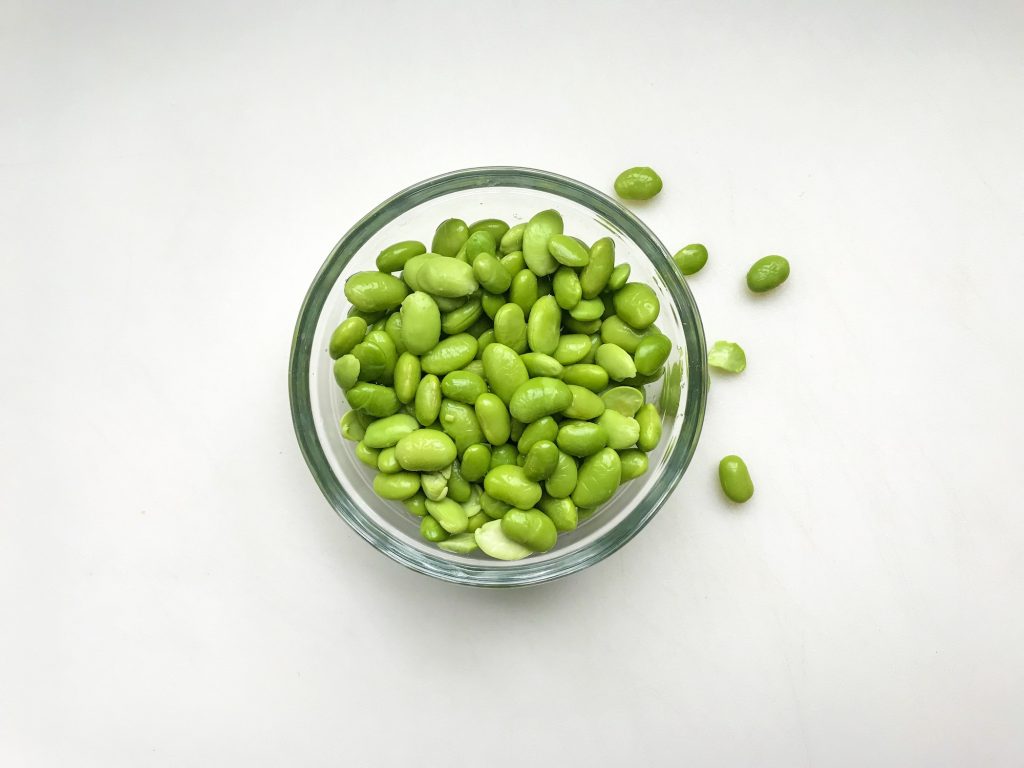
3. Serve edamame as a green veggie, or work it into dips or other dishes
Admittedly my own kids didn’t love edamame right away, but I stuck with it and now it serves us so well. This whole protein is a much more economical choice than meat, and I love that I’m simultaneously serving something colorful, delicious, and high in protein. Containing all the essential amino acids, edamame is a great protein source. Plus, it’s so easy to store and serve! You can stash it in the freezer (or buy a bag of frozen) so it’s ready at a moment’s notice.
I like tossing it into rice as it finishes steaming, which is a clever, healthy shortcut I’ve employed many nights. Or, steam the full pods, sprinkle with sea salt, and lots of kids will love popping them in their mouths for a snack or a pre-dinner treat.
Or, make a batch of edamame hummus, one of our favorite easy cracker-toppers that doubles as a great dip for carrot sticks and celery.
Note: If you’re feeding toddlers, be sure to cook fully and chop edamame as needed before serving.
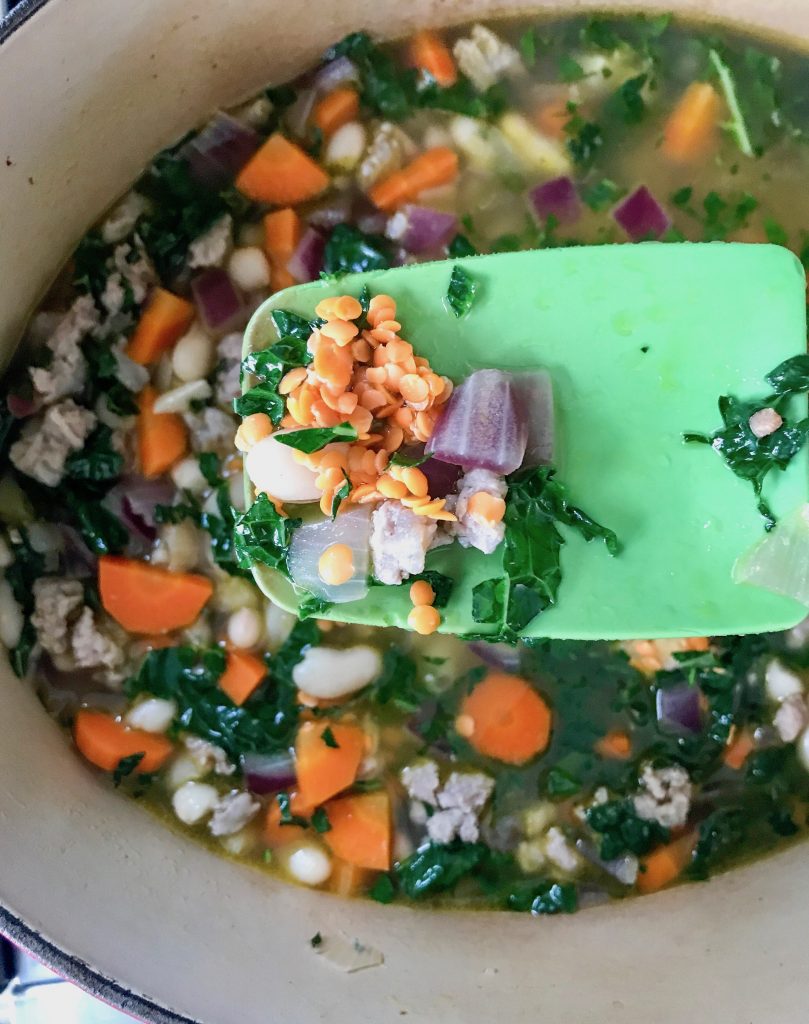
4. Add red lentils to soups or other foods that kids already like
Lentils are a powerhouse of nutrition. A 1/2-cup serving of cooked lentils adds an extra 9 grams of protein in a to your soup, along with fiber, iron, folate and potassium. And the best part? These delicate lentils will break apart and soften while cooking, rendering them barely noticeable in the finished dish. The end benefit is a slightly thicker broth that’s loaded with protein and minerals.
But hey, red lentils blend beautifully into sweeter treats too, because they’re mild and have a subtle sweetness themselves.
CBC Parents food contributor and cookbook author Julie Van Rosendaal of Dinner With Julie offers quite a few clever ways to sneak red lentils into foods kids like chocolate-chip banana bread, oatmeal scones, and oatmeal raisin cookies.
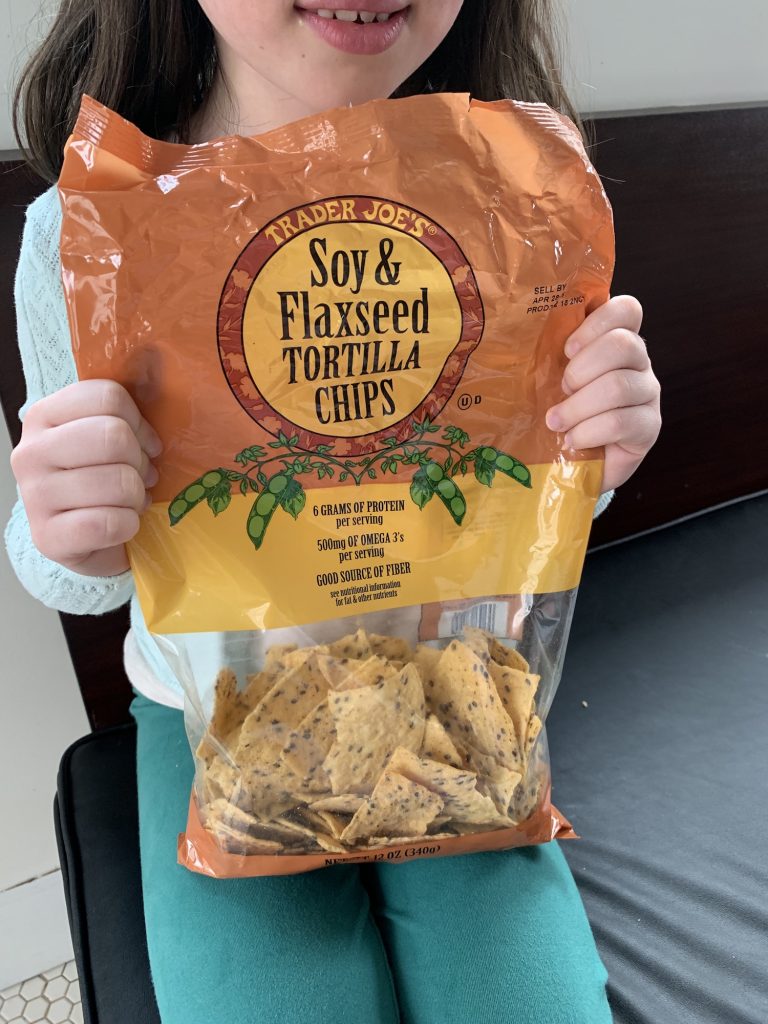
5. Replace regular potato chips with a protein-packed chip
There’s nothing wrong with Ruffles every once in awhile in our home (preferably with that sour cream onion dip), but for an everyday school lunch snack, try swapping chips out for a choice like the Flaxseed and Soy Chips from Trader Joe’s (above) or the roasted chickpea snacks from the Good Bean Roasted Chickpeas that Georgette found in her roundup of high-protein grocery store snacks.
They’re still salty and crunchy and satisfying, which is all kids really want with a sandwich.Yes it’s processed — but not every kid wants a half-cup of edamame or quinoa in their lunch every day and this is a smart substitution to get a little more protein into kids’ diets without changing their eating habits much.
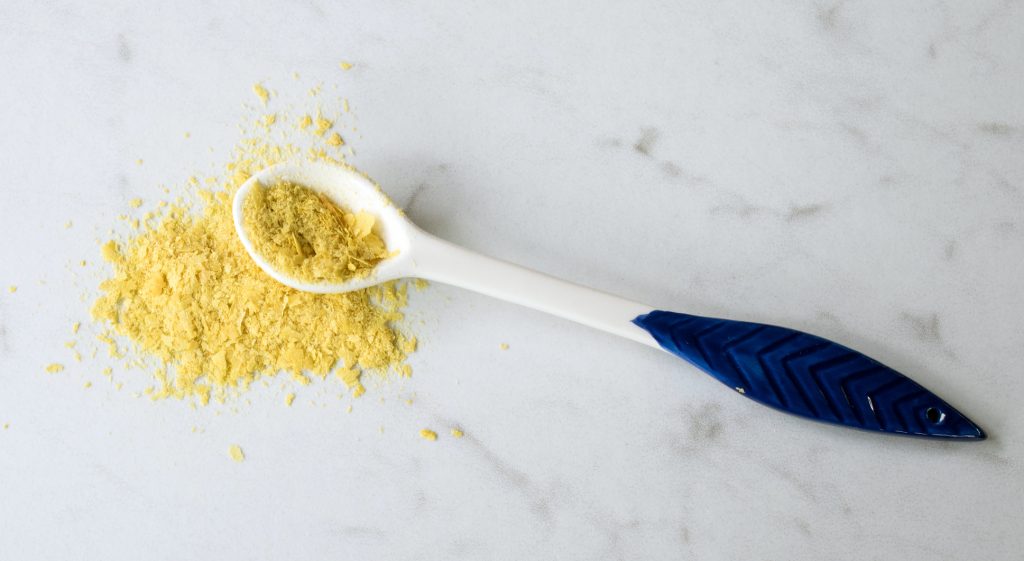 Photo: Kathy Hester for Whole Foods Market
Photo: Kathy Hester for Whole Foods Market
6. Try sprinkling nutritional yeast on snacks and other dishes
A vegan friend tipped me off to nutritional yeast — which, get this, can also be called “nooch.” How much cuter is that than “nutritional yeast” when you’re selling the idea to your kids?
This Whole Foods article has some great info on what nutritional yeast is and how to use it, but I think the best ideas for kids are sprinkling some on pasta, on popcorn, and in soups for a hefty 8 grams of protein per two tablespoons.
You can also sprinkle it on crusty bread with a drizzle of olive oil, scramble it into eggs, or mix it into dips and spreads like hummus or tahini. Because it has a slightly cheesy flavor, we’ve even seen recipes incorporating it into queso dip, nacho cheese spread, and mac n’ cheese too.
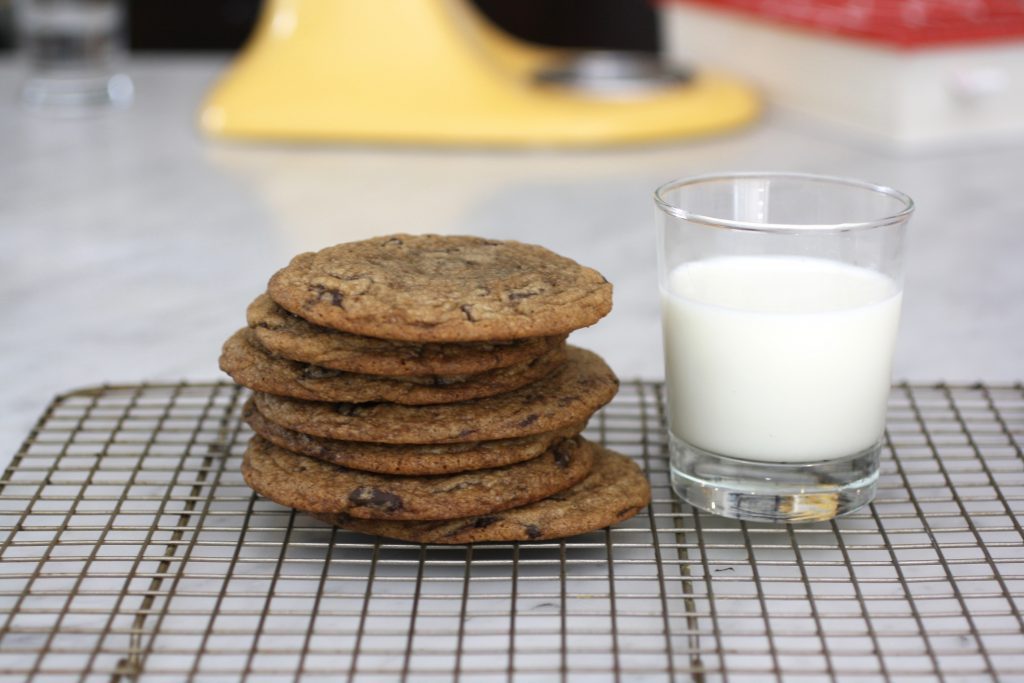
7. There’s always a big glass of milk
With 8 grams of protein per cup, milk is always a good, simple way to add more protein to your kid’s diet. Even if it comes with a side of chocolate chip cookie.
All photography © Jane Sweeney unless otherwise indicated

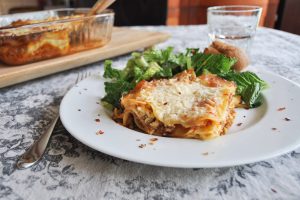
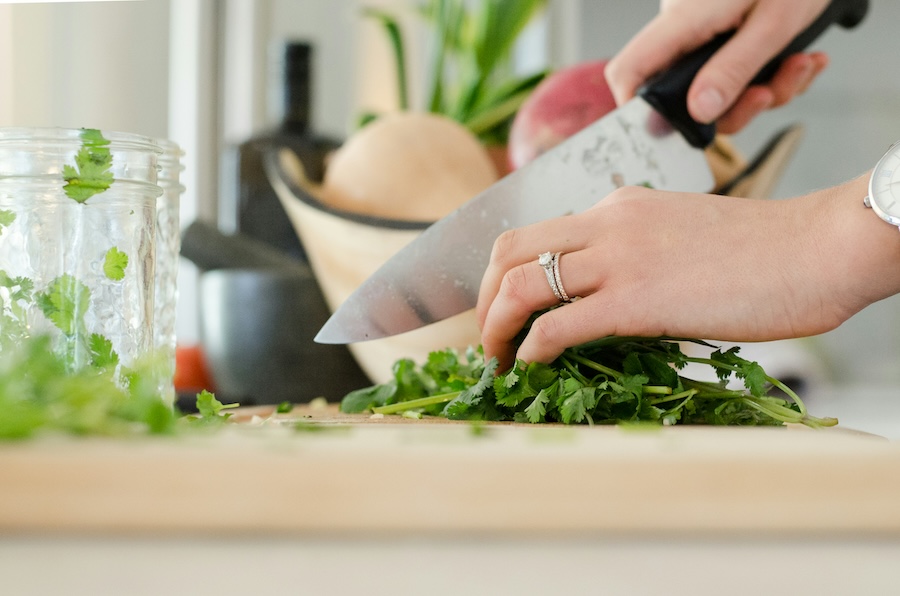


Hi my greatgrandson is Austict he misses him mom she is incoserated now he doesn’t want to eat juss drinks protein drinks need advice ASAP please